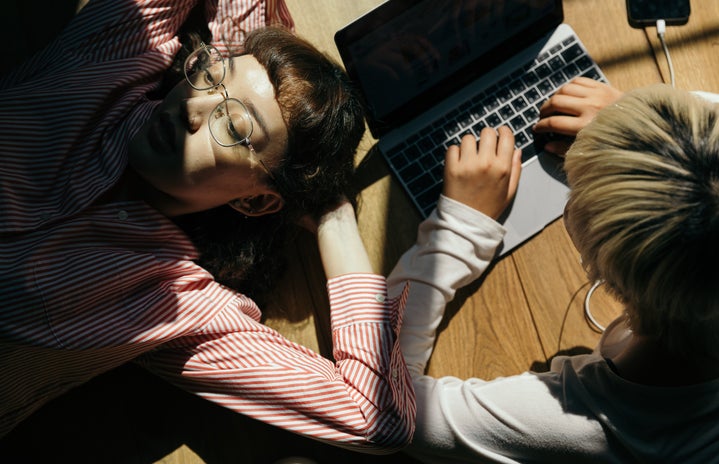Edited by: Mohan Rajagopal
I sit closer to the earth to ground me
To heal me from these world-shattering events
The floor is what soothes me,
What loves me,
What holds me when nobody else can
A cradle
Nothing resembling a womb
Nothing even close
Earth gods, you are my guardian angels
So shelter me til I find stability
A place that is mine alone. A place that brings me home. A place that feels safe. A place that shelters from the storm. In a world that can often be harsh and unforgiving, we all seek refuge in places that bring us comfort and solace. It can be a physical space, like a cosy corner in our home, a park bench under a tree, or even a small room with afan humming in the background. Or, it can be a mental space, a place of our own where we can retreat, be ourselves, and unwind. It is in these moments that the floor of my room becomes a provider of a few stolen moments of calm and peace. I sit with myself, away from the world around me. It feels like an utterly human experience — to look for a safe place wherever we may. A familiar face, a comfort food, or a nostalgic song, we try to find spaces in which we feel safe. The girl I met over a cup of coffee finds her safe space by the football field, sitting on the bleachers and enjoying some mellow music. The boy who sits across from me in class turns to the gym when he needs some time to himself. My roommate escapes campus by heading to the tapri for her dose of chai and sutta. And the girl who helped me with my assignments hides away in the electrical closet for a few moments to herself.
I sit and listen to the music
I heard when I was a child
To save me from this world’s wild
In my head the world is wild
A comfort that defies all logic
In hand
A hot drink
Ledges up high,
Lording over the mounds,
On the field, the shining sun
Sitting in the warmth, the lawns
The story of a walk
Music plays in my ears, I leave my room
And just walk
I feel the words in my bones
Replacing the hole created by my anxiety
People cook in the kitchen and invite me to sit and talk
If you are one of these people
Just know you were there for me in my hardest times
An unknowing safe space
If I need people I will let them know
I think as I sit in the undefined crevice
Beyond the extent of my mind
I think about nothing
And let my body be
It is a time I need people for
Their voices and nonsensical chatter
In present time — a pull for my thoughts
In outer space, bring me back home
There are three people in this scene
I play my song
And they sit and listen to my thoughts
I don’t say them out loud
And this is my safe space.
The places we find to be safe are one of the few things in our lives that are not defined by what or who is around us, but by an inward experience that is sometimes hard to explain. They don’t judge or pressurise, they don’t compel or antagonise, they don’t lie or hide. The beauty of safe spaces is that they are not defined by what or who is around us,. They are places where we can be vulnerable, where we can cry, laugh, or just sit in silence, and where we know that we are not judged or criticised.
The spaces become a place of connection, where we can bond with others, and where we can create meaningful relationships that last a lifetime. Sometimes in life, we are lucky enough to find people who do the same — people who bring you home. People who shelter you from the storm. People who feel safe. And when we do, we give them an opening into our safe spaces, and for a brief moment of time, those spaces are not ours alone, but a place that is shared, and yet, they somehow still feel safe.


